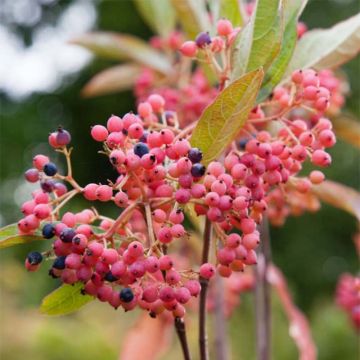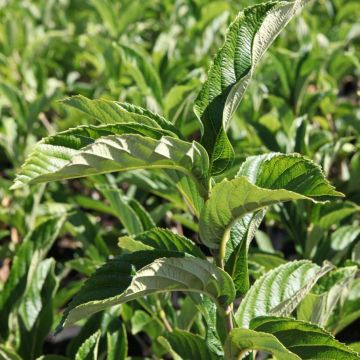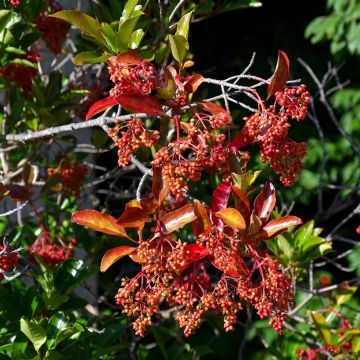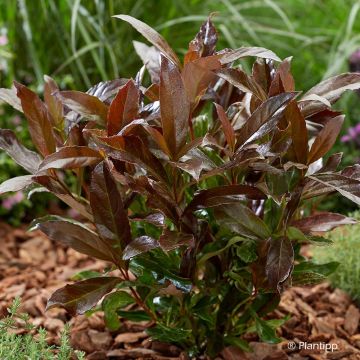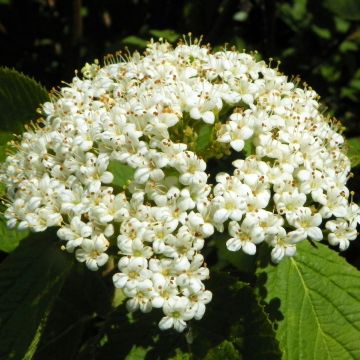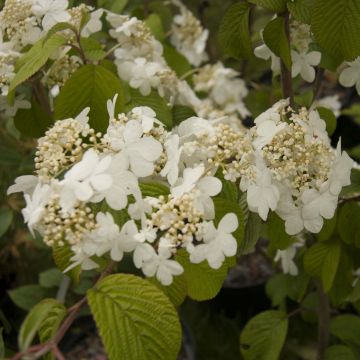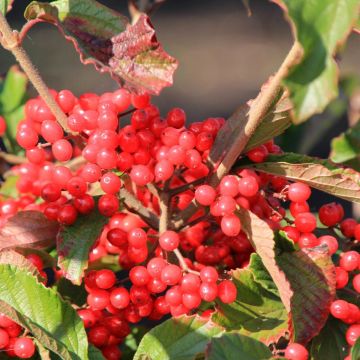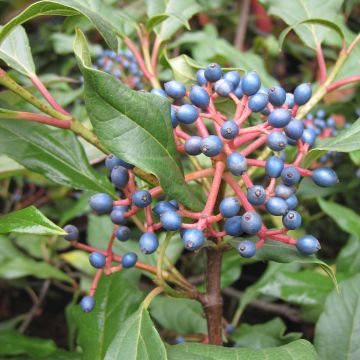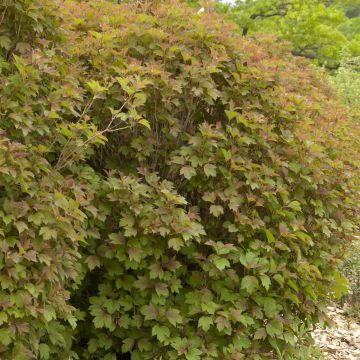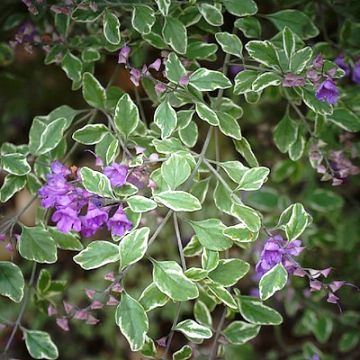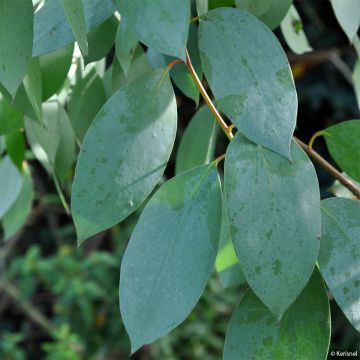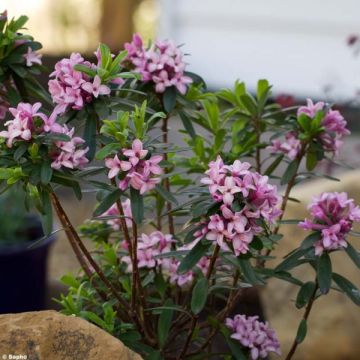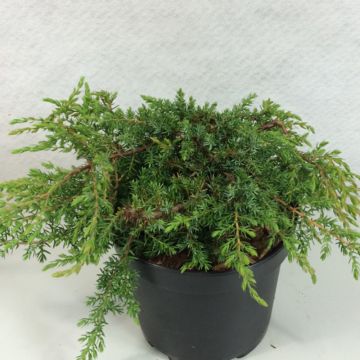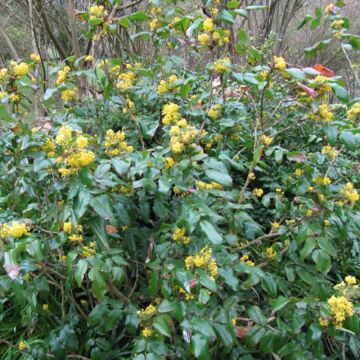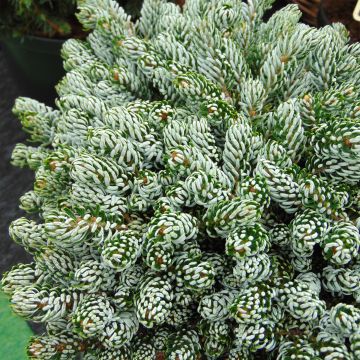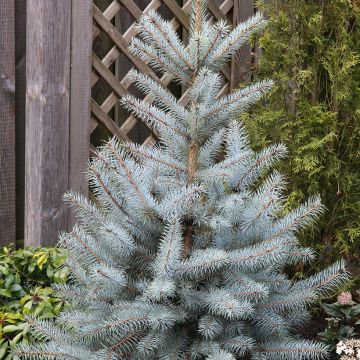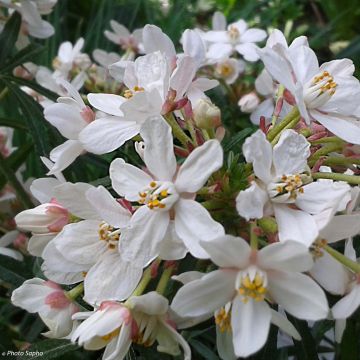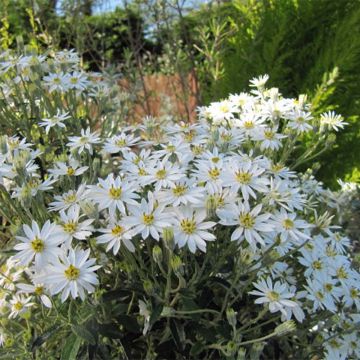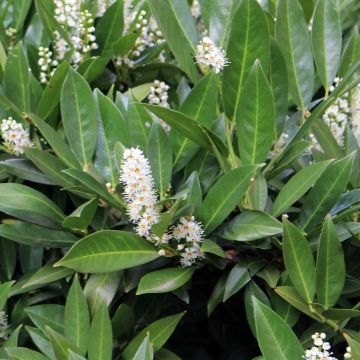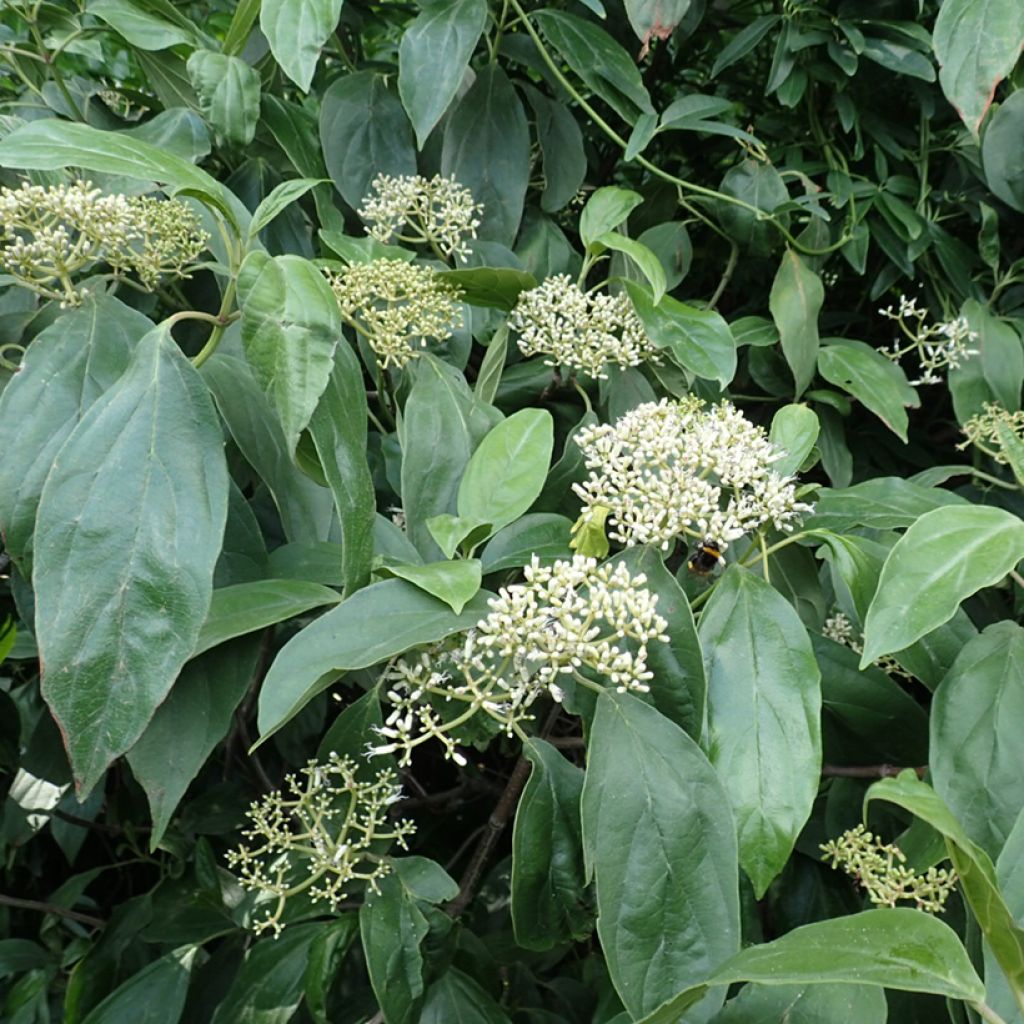

Viburnum cylindricum
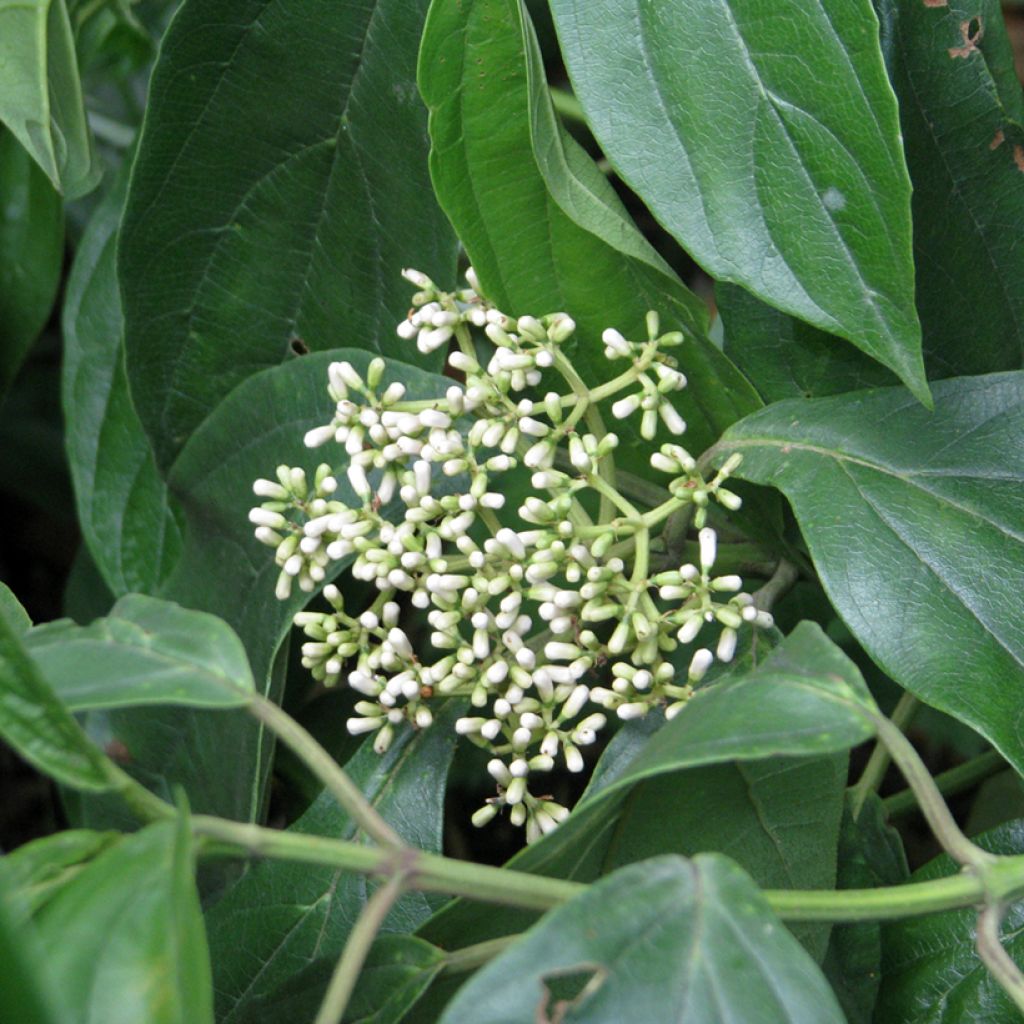

Viburnum cylindricum
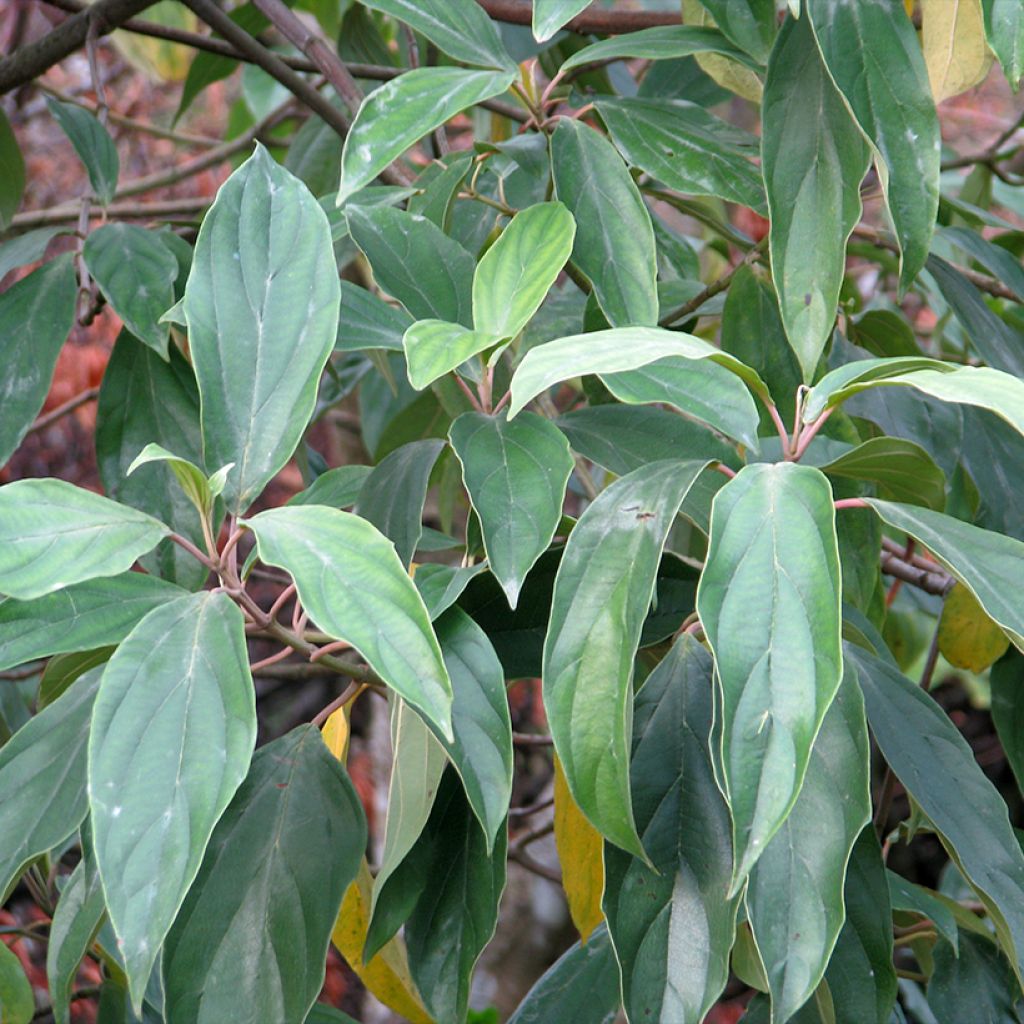

Viburnum cylindricum
Viburnum cylindricum
Viburnum cylindricum
This item cannot be shipped to the selected country
Delivery charge from €5.90
More information
Schedule delivery date,
and select date in basket
This plant carries a 24 months recovery warranty
More information
We guarantee the quality of our plants for a full growing cycle, and will replace at our expense any plant that fails to recover under normal climatic and planting conditions.
From €5.90 for pickup delivery and €6.90 for home delivery
Express home delivery from €8.90.
Does this plant fit my garden?
Set up your Plantfit profile →
Description
Viburnum cylindricum forms a beautiful bushy shrub that can reach 3m in all directions and is appreciated for its unique foliage. Its drooping leaves are covered in a waxy film that turns grey and gives the whole plant a dark bluish-green colour. From June, flat corymbs of tubular white flowers with lilac anthers appear, followed by ovoid red fruits that turn black. This tubular flowered viburnum will find its place as a specimen plant, in a border, or in a hedge. It is an easy and hardy shrub that requires little care and appreciates moist and well-drained soil, preferably non-calcareous.
From the family Caprifoliaceae or Viburnaceae according to classifications, the Viburnum genus includes numerous species of deciduous or evergreen Viburnums, with more or less fragrant flowering. Viburnum cylindricum, also known as Viburnum coriaceum, is native to Southeast Asia, particularly China and the Himalayas. It is distinguished by its leaves covered in a waxy layer that gives it a bluish-green appearance and by its tubular flowers grouped in flat corymbs, which gave it the name "cylindricum". This tubular-flowered viburnum forms a beautiful rounded bush with evergreen foliage. Its leaves are carried by warty branches. They vary in shape depending on their age. They are toothed when young and become entire when mature. Generally long and pointed, they are often drooping. They are covered in a waxy layer that gives the foliage a silvery sheen. It is said that the Chinese used them to transmit messages, as they can be written on. From June to August, flat inflorescences measuring 8 to 15 cm in diameter form, consisting of tubular white flowers with violet anthers. They are slightly fragrant. They are followed by red berries that turn black.
In the garden, this evergreen viburnum will thrive in full sun or partial shade in damp to moist, well-drained soil that is ideally non-calcareous. This adaptable plant requires little care. It can be used as a standalone specimen to highlight its unique foliage, in the back of a border, or in a diverse and informal hedge. It is hardy but it may occasionally lose its foliage when temperatures drop below -15°C. Its flowering attracts pollinating insects and its fruits are enjoyed by birds.
Report an error about the product description
Plant habit
Flowering
Foliage
Botanical data
Viburnum
cylindricum
Viburnaceae
Viburnum coriaceum
China
Other Viburnum
Planting and care
Viburnum cylindricum is an accommodating plant that thrives in both full sun and partial shade. Provide it with fertile, moist to wet soil, not retaining too much water, neutral to slightly acidic. This bush is hardy below -15°C. It may lose its foliage when temperatures drop below -15°C. It tolerates pruning well. Prune awkward or crossing branches in late winter to early spring.
Planting period
Intended location
Care
This item has not been reviewed yet - be the first to leave a review about it.
Evergreen shrubs
Haven't found what you were looking for?
Hardiness is the lowest winter temperature a plant can endure without suffering serious damage or even dying. However, hardiness is affected by location (a sheltered area, such as a patio), protection (winter cover) and soil type (hardiness is improved by well-drained soil).

Photo Sharing Terms & Conditions
In order to encourage gardeners to interact and share their experiences, Promesse de fleurs offers various media enabling content to be uploaded onto its Site - in particular via the ‘Photo sharing’ module.
The User agrees to refrain from:
- Posting any content that is illegal, prejudicial, insulting, racist, inciteful to hatred, revisionist, contrary to public decency, that infringes on privacy or on the privacy rights of third parties, in particular the publicity rights of persons and goods, intellectual property rights, or the right to privacy.
- Submitting content on behalf of a third party;
- Impersonate the identity of a third party and/or publish any personal information about a third party;
In general, the User undertakes to refrain from any unethical behaviour.
All Content (in particular text, comments, files, images, photos, videos, creative works, etc.), which may be subject to property or intellectual property rights, image or other private rights, shall remain the property of the User, subject to the limited rights granted by the terms of the licence granted by Promesse de fleurs as stated below. Users are at liberty to publish or not to publish such Content on the Site, notably via the ‘Photo Sharing’ facility, and accept that this Content shall be made public and freely accessible, notably on the Internet.
Users further acknowledge, undertake to have ,and guarantee that they hold all necessary rights and permissions to publish such material on the Site, in particular with regard to the legislation in force pertaining to any privacy, property, intellectual property, image, or contractual rights, or rights of any other nature. By publishing such Content on the Site, Users acknowledge accepting full liability as publishers of the Content within the meaning of the law, and grant Promesse de fleurs, free of charge, an inclusive, worldwide licence for the said Content for the entire duration of its publication, including all reproduction, representation, up/downloading, displaying, performing, transmission, and storage rights.
Users also grant permission for their name to be linked to the Content and accept that this link may not always be made available.
By engaging in posting material, Users consent to their Content becoming automatically accessible on the Internet, in particular on other sites and/or blogs and/or web pages of the Promesse de fleurs site, including in particular social pages and the Promesse de fleurs catalogue.
Users may secure the removal of entrusted content free of charge by issuing a simple request via our contact form.
The flowering period indicated on our website applies to countries and regions located in USDA zone 8 (France, the United Kingdom, Ireland, the Netherlands, etc.)
It will vary according to where you live:
- In zones 9 to 10 (Italy, Spain, Greece, etc.), flowering will occur about 2 to 4 weeks earlier.
- In zones 6 to 7 (Germany, Poland, Slovenia, and lower mountainous regions), flowering will be delayed by 2 to 3 weeks.
- In zone 5 (Central Europe, Scandinavia), blooming will be delayed by 3 to 5 weeks.
In temperate climates, pruning of spring-flowering shrubs (forsythia, spireas, etc.) should be done just after flowering.
Pruning of summer-flowering shrubs (Indian Lilac, Perovskia, etc.) can be done in winter or spring.
In cold regions as well as with frost-sensitive plants, avoid pruning too early when severe frosts may still occur.
The planting period indicated on our website applies to countries and regions located in USDA zone 8 (France, United Kingdom, Ireland, Netherlands).
It will vary according to where you live:
- In Mediterranean zones (Marseille, Madrid, Milan, etc.), autumn and winter are the best planting periods.
- In continental zones (Strasbourg, Munich, Vienna, etc.), delay planting by 2 to 3 weeks in spring and bring it forward by 2 to 4 weeks in autumn.
- In mountainous regions (the Alps, Pyrenees, Carpathians, etc.), it is best to plant in late spring (May-June) or late summer (August-September).
The harvesting period indicated on our website applies to countries and regions in USDA zone 8 (France, England, Ireland, the Netherlands).
In colder areas (Scandinavia, Poland, Austria...) fruit and vegetable harvests are likely to be delayed by 3-4 weeks.
In warmer areas (Italy, Spain, Greece, etc.), harvesting will probably take place earlier, depending on weather conditions.
The sowing periods indicated on our website apply to countries and regions within USDA Zone 8 (France, UK, Ireland, Netherlands).
In colder areas (Scandinavia, Poland, Austria...), delay any outdoor sowing by 3-4 weeks, or sow under glass.
In warmer climes (Italy, Spain, Greece, etc.), bring outdoor sowing forward by a few weeks.

































